The Hasselblad XCD 135/2.8 is one of the first batch of lenses for the Hasselblad X1D and X2D (X mount) cameras. It is usually sold bundled with a matched 1.7x teleconverter (TC) and a tripod collar that attaches to the TC. Except for the focusing ring, the lens is completely devoid of controls – everything else is managed by the camera body. The tripod collar has no detents but does feature a quick release dovetail. Unfortunately, it’s not an Arca Swiss compatible dovetail, but looks like the one that’s on the bottom of the Hasselblad V-series 6x6cm that fit Hasselblad’s proprietary quick release tripod mount. Like Porsche with their key receptacle to the left of the steering wheel, Hasselblad is faithful to their traditions – in my mind excessively so.
By medium format standards, this is a fast lens. By image height, it’s the equivalent of a 100mm f/2 lens on a 24x36mm full frame sensor. It’s not a telephoto design – it measures 145mm from the filter ring to the flange – but it’s not much bigger in diameter than a lens of that speed and focal length would have to be. With the TC attached, it’s a 230mm f/4.8 lens, or the equivalent of a full frame 165mm f/3.5 lens. The minimum focusing distance is 1 meter, which is close enough for me, especially with the TC attached. At just under $5000 with the collar and TC, it’s a bargain compared to the newest f/2.5 XCD lenses.
The lens is mechanically solid and appears well made. I didn’t check the weather sealing.
Summary
I won’t keep you in suspense. This is a fine lens. It’s sharp enough to take advantage of the 102 MP sensor in the X2D, and the corner performance is very good. The performance with the TC knocked my socks off. I don’t think I’ve ever seen a TC come as close to ideal behavior than this one. Chromatic aberrations are well controlled. Field curvature is nearly nonexistent. Bokeh is good except at high shutter speeds with some subjects, where there can be leaf-shutter artifacts.
Sharpness
Here’s a Zeiss Siemens star at 25 feet wide open with the XCD 135 on the X2D at about 150% magnification, with the star in the center of the frame:
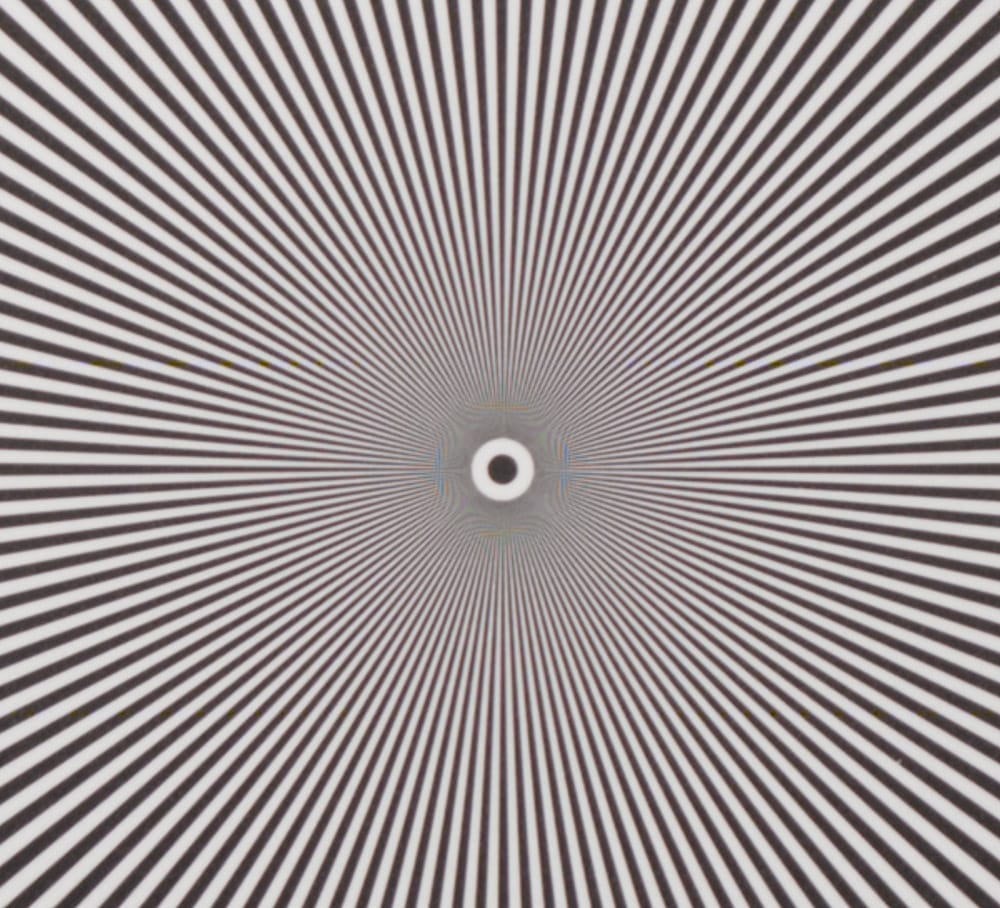
The lens is laying down detail that the sensor can’t resolve.
One of my standards for sharpness comparisons is the Fujifilm 110/2 GF on the GFX 100 II. There are few sharper lenses out there. Here’ what that combination looks like under the same conditions:

It’s clear that the GF 110 is sharper under those conditions, But in this case, the increased sharpness seems to mostly result in just more aliasing.
If we stop the XCD down a stop, we get a slightly sharper image:
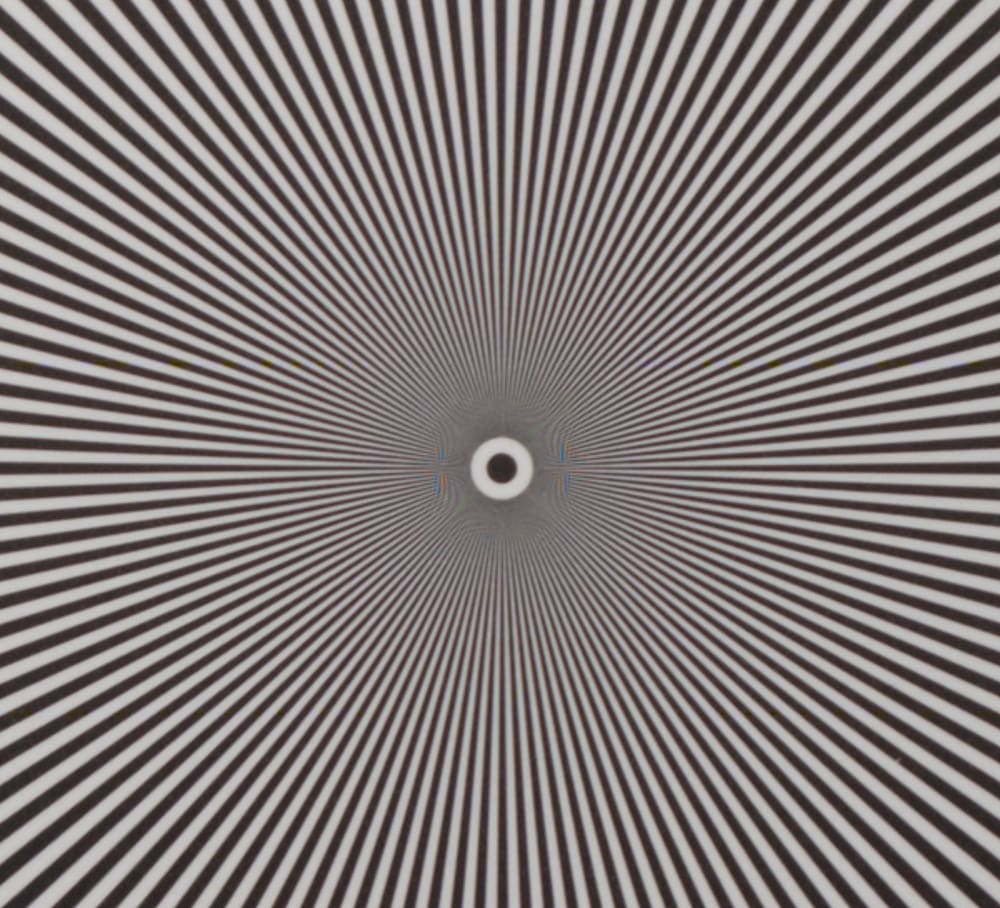
f/5.6 looks about the same, and at f/8 we’re seeing some loss due to diffraction. At f/11, diffraction virtually eliminates the aliasing.
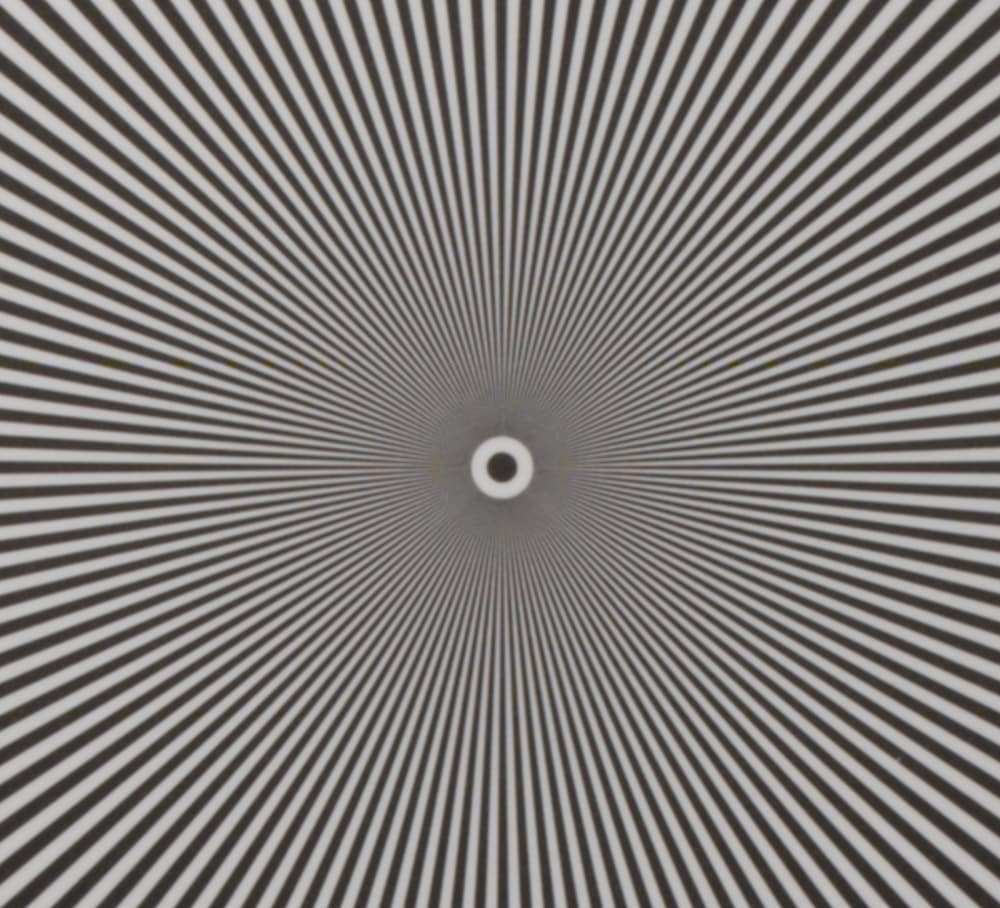
In the corner, wide open:
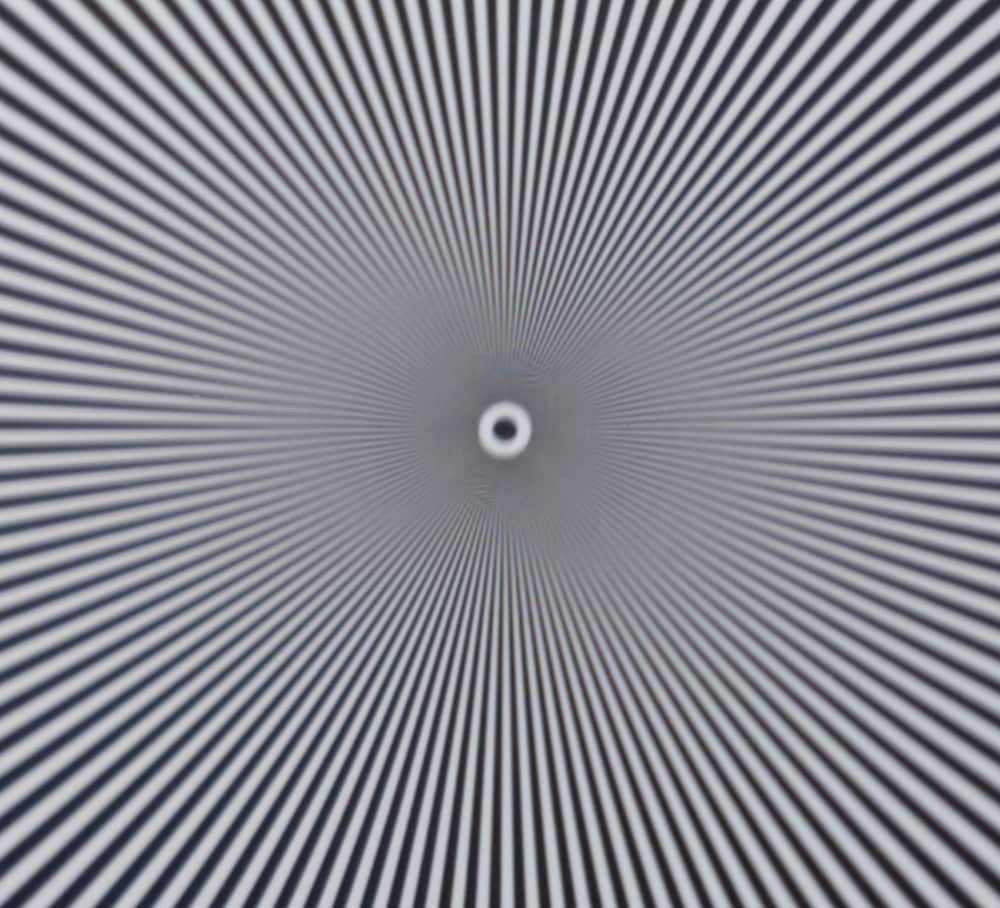
We’re still seeing a bit of aliasing, which indicates that the lens is providing more detail than the sensor can correctly resolve.
The Fuji 110/2 under the same conditions:

The Fuji lens has less illumination falloff, but it’s actually not as sharp as the XCD 135/2.8.
At f/5.6, the corners crisp up:
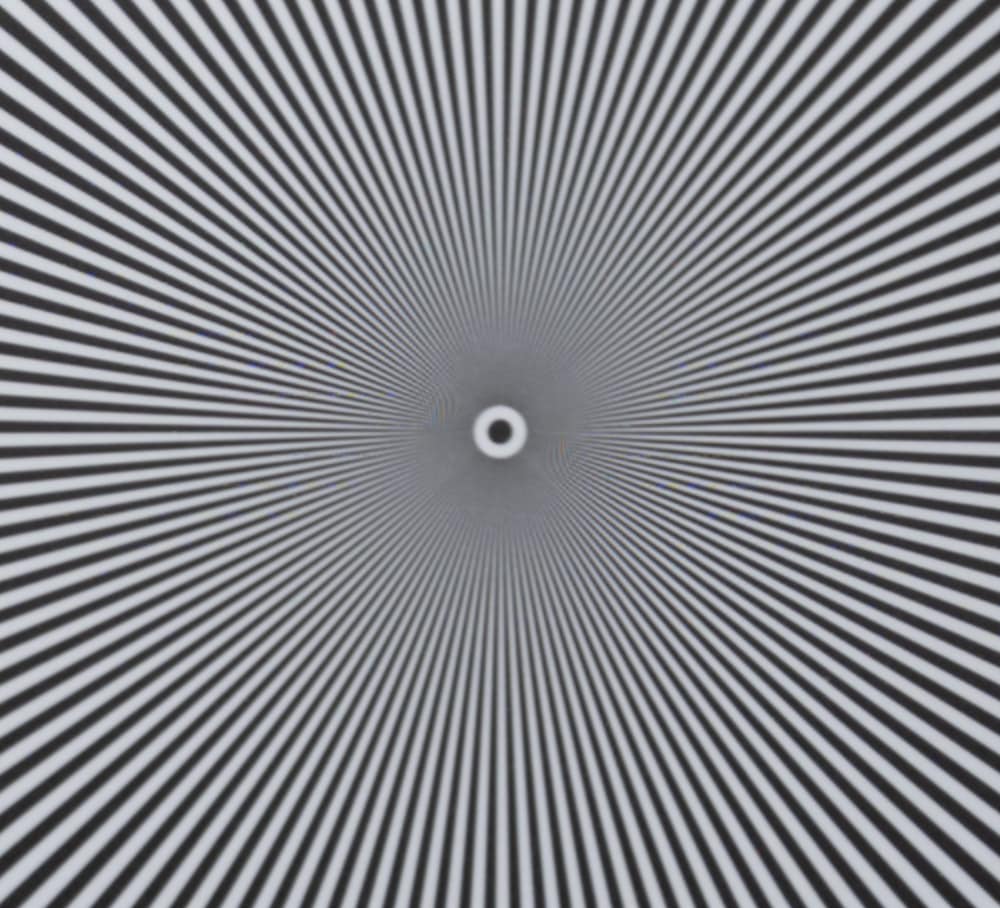
At f/8 the corners look about the same as at f/5.6, and diffraction has virtually removed the aliasing at f/11.
That corner performance is impressive.
What happens with the 1.7X TC under the same conditions?
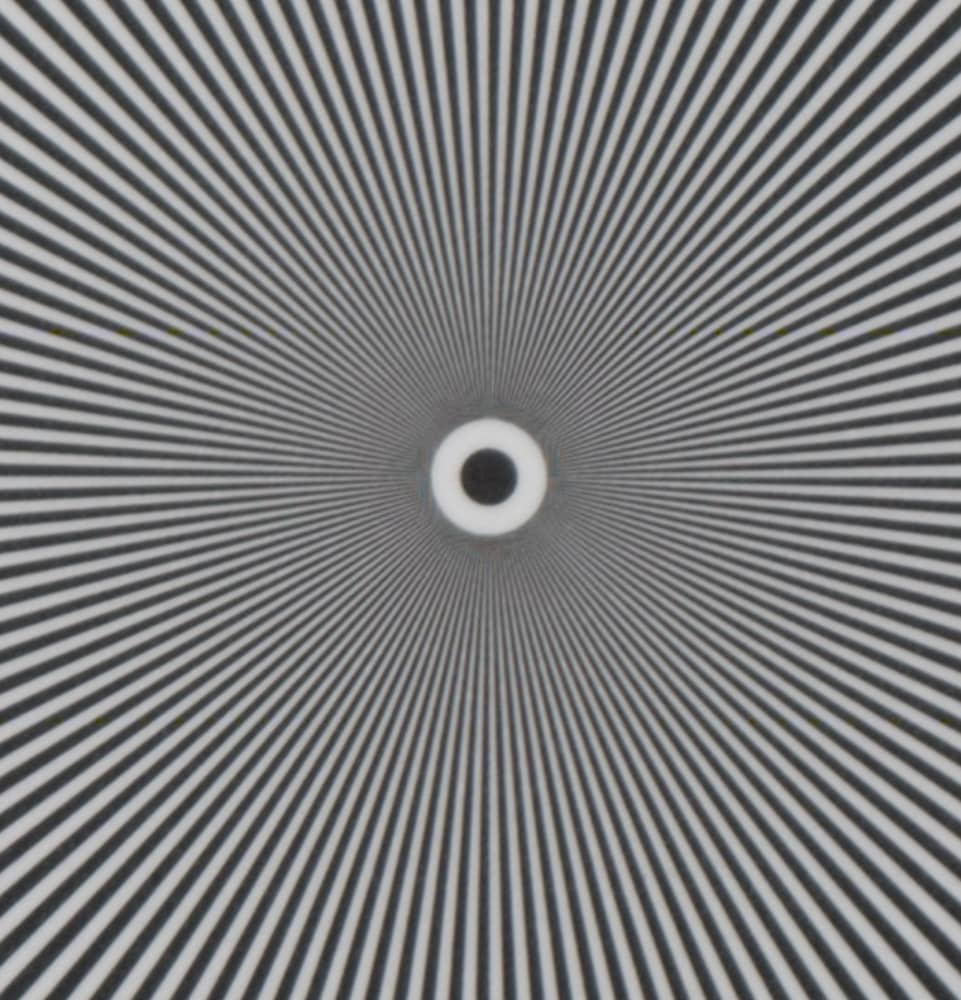
At this distance, we’re flirting with the high spatial frequency limits of the target, but there’s some aliasing showing near the white ring. I don’t remember ever seeing a TC that provided as close to ideal performance as this one.
Stopping down to f/5.6 sharpens things up a little bit:
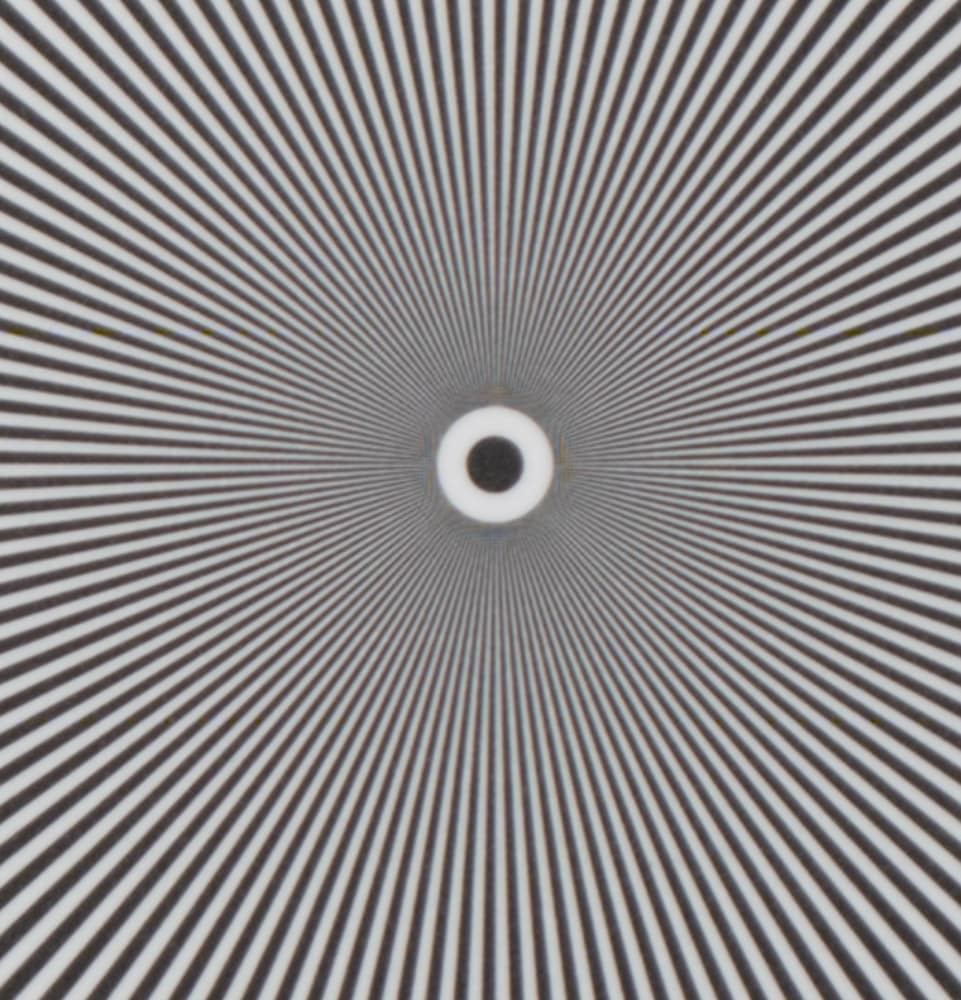
But going a step further to f/8 means that diffraction is costing us sharpness:
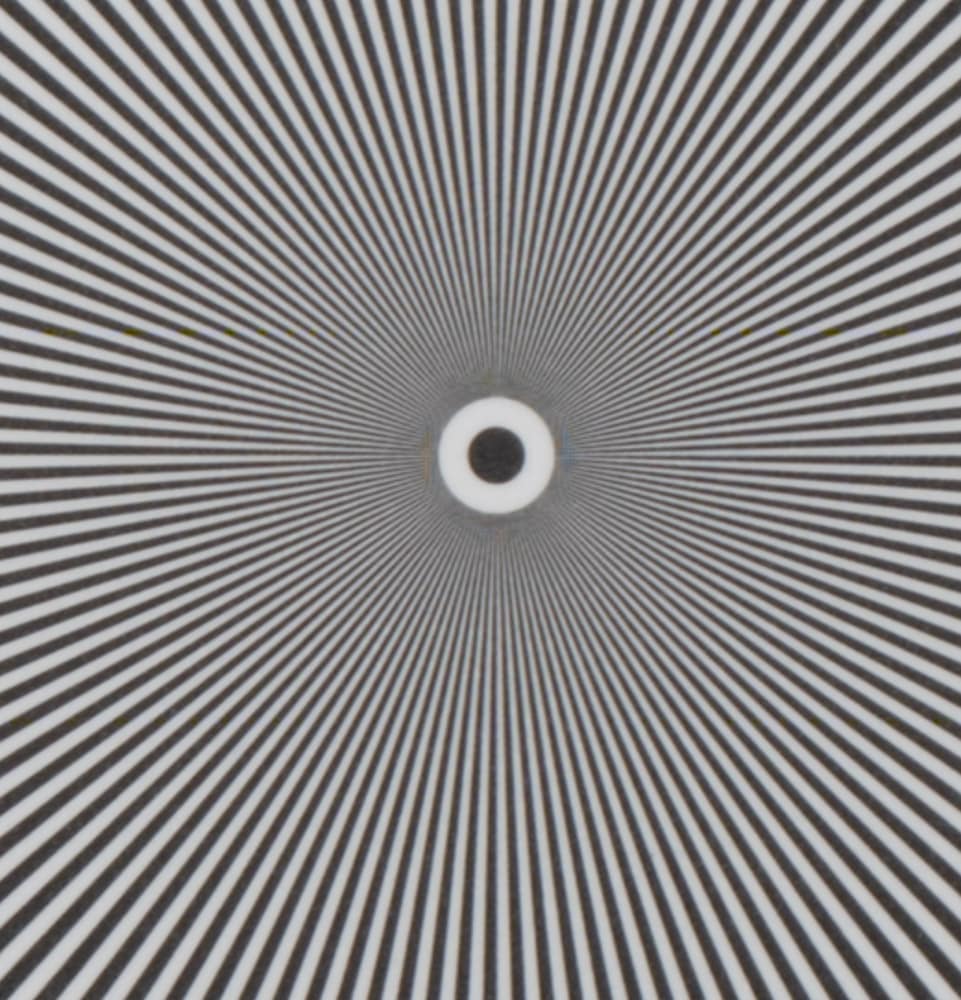
In the corner, wide open:
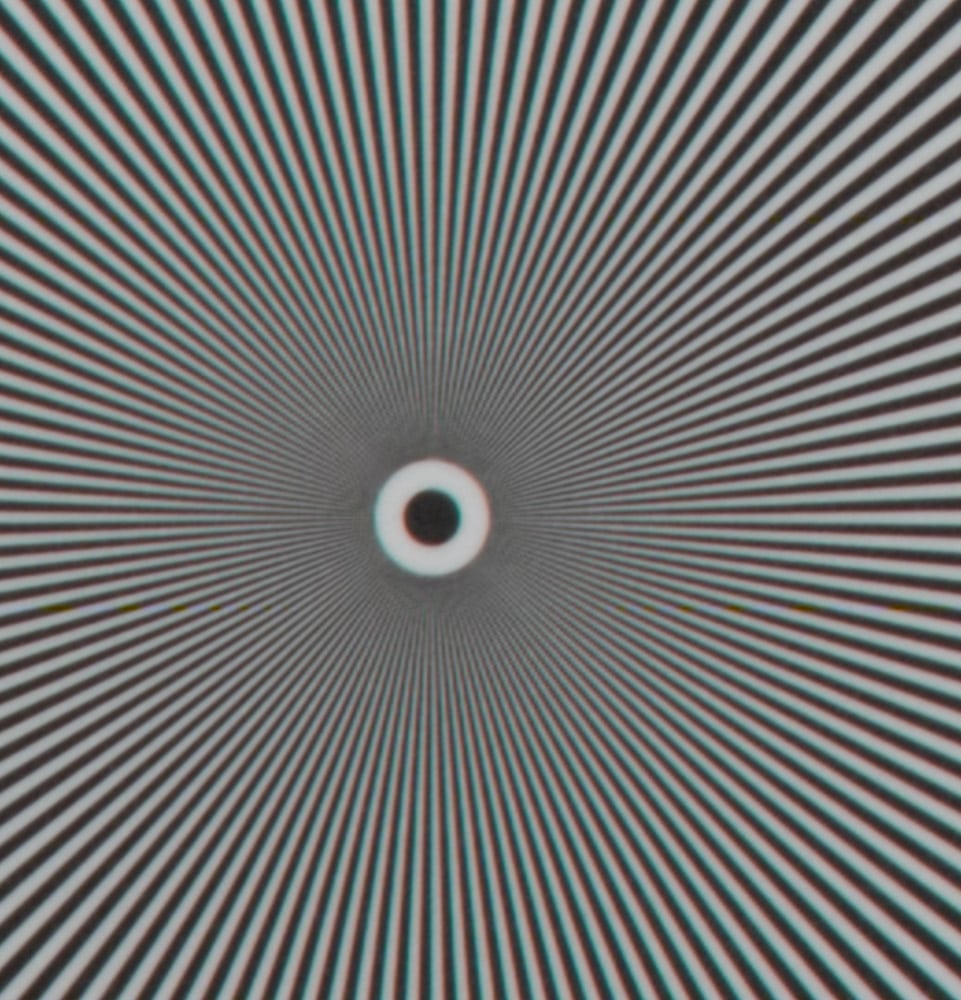
Just a hint of aliasing. This is a really strong performance.
Still in the corner at f/5.6:
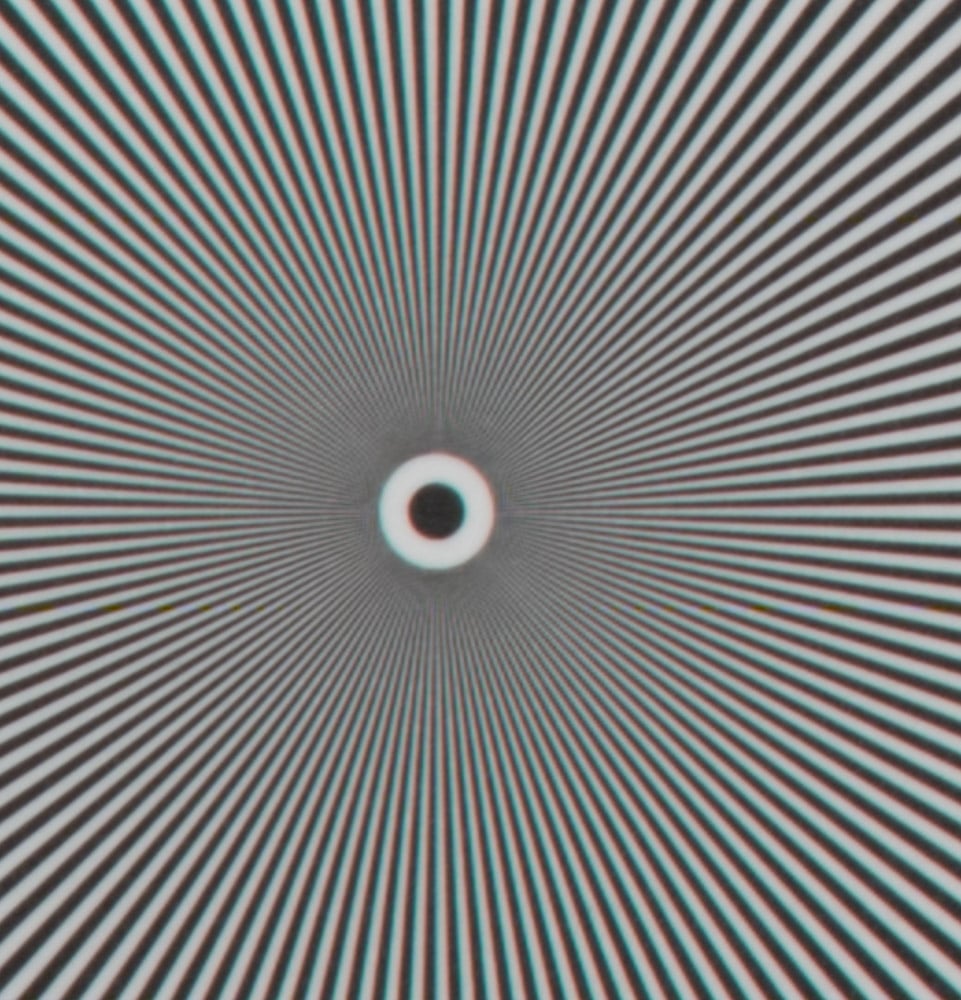
About the same.
f/8:
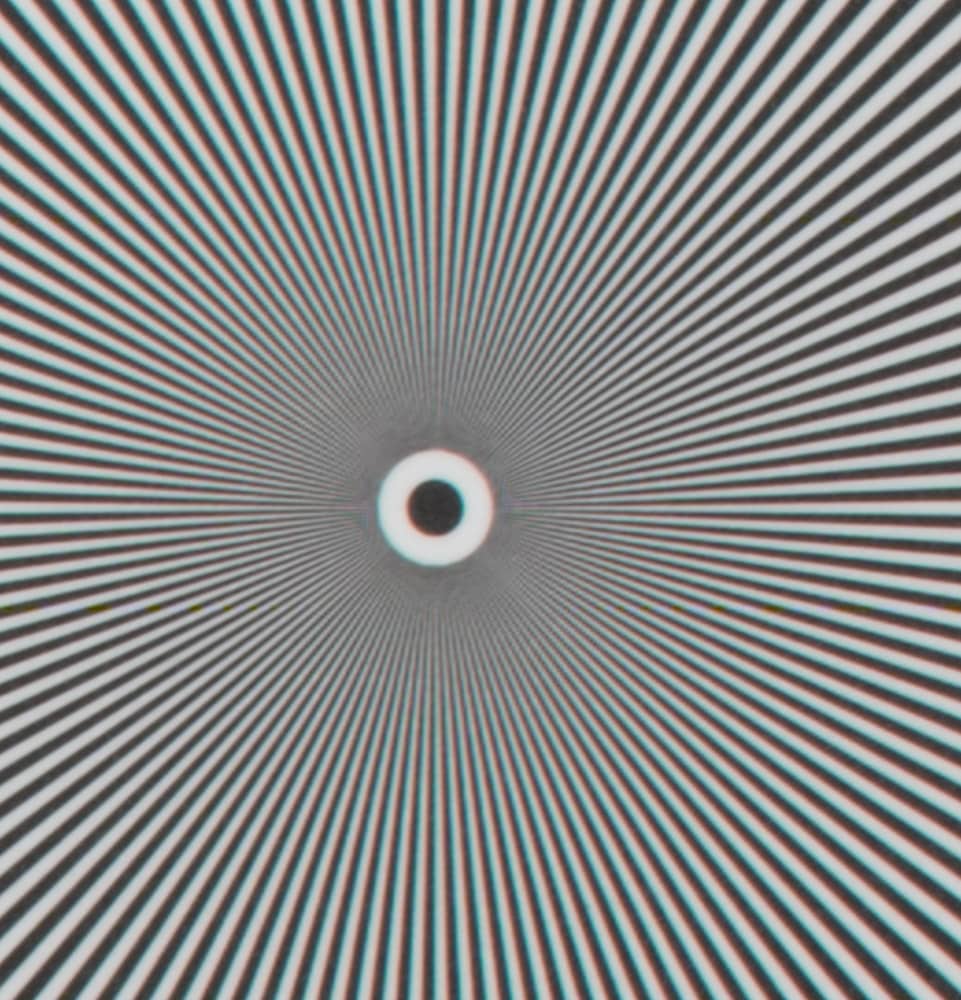
Color me impressed!
Field curvature.
I used Roger Cicala’s quick field curvature test.
Wide open, and focused at about 25 feet, here’s the result:
Hard to beat that.
With the TC:
Also excellent.
Bokeh
There are two elements to bokeh: the far out of focus performance and the transition from in-focus to out-of-focus. A good way to analyze the first is to make images of a point source at a distance, with the lens focused close to the camera.
When we do that with the electronic shutter, we see this:
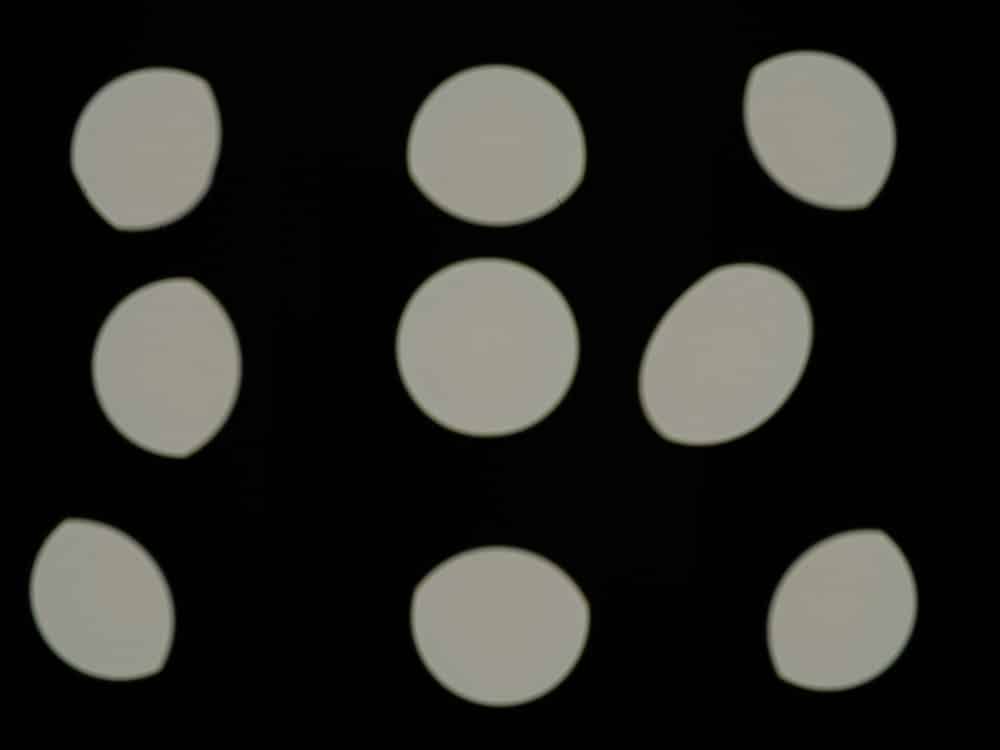
This looks fine: a nice flat disk in the center, and not too much mechanical vignetting towards the edges and corners.
But things aren’t so rosy with the mechanical shutter at 1/2000 second:
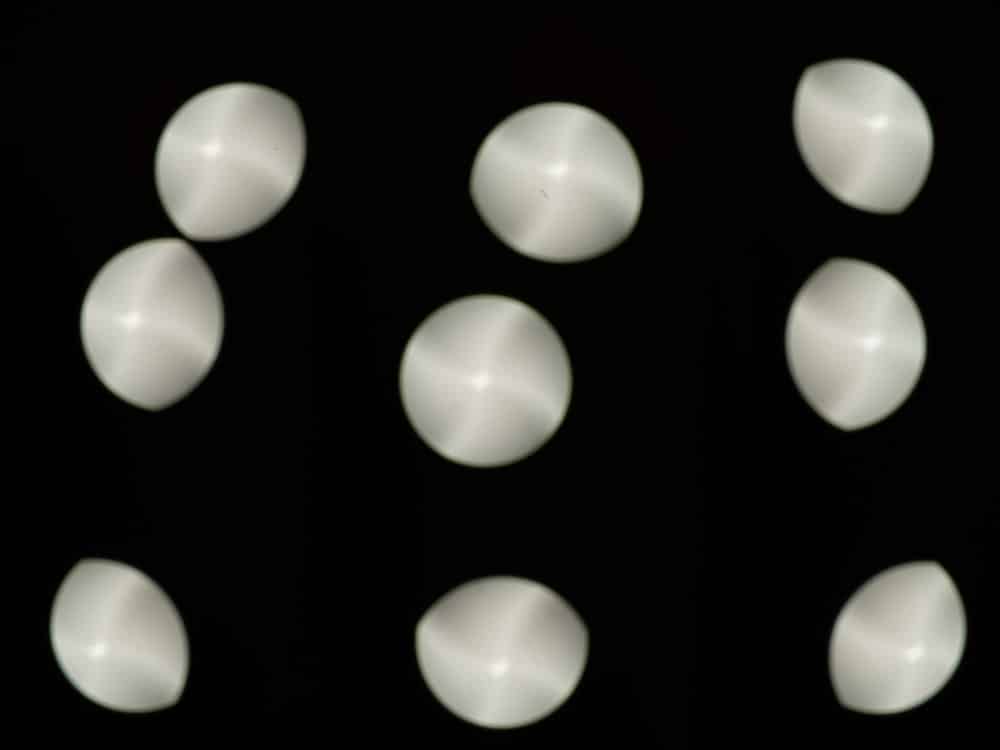
The construction of the four-blade leaf shutter is quite visible.
Here is a composite image of three center shots at 1/2000, 1/1000, and 1/500 second from left to right:
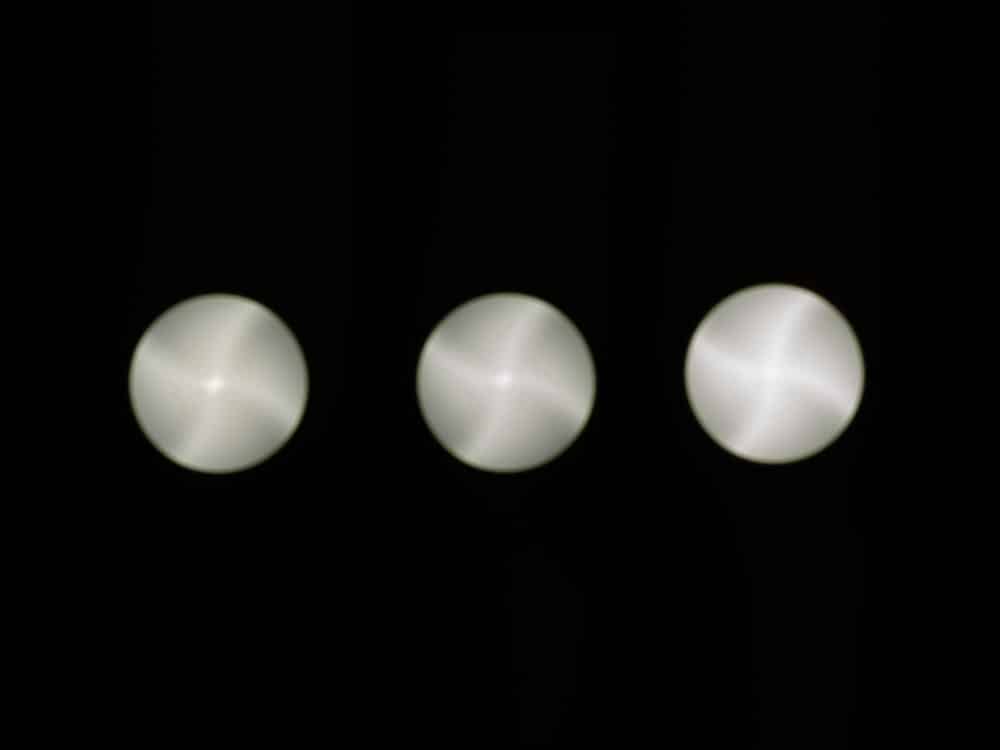
You can see that things are getting slightly better as the shutter speed gets longer, but this will still be an issue with out-of-focus specular highlights under some circumstances.
Let’s look at some images to get an idea of both kinds of bokeh:
Here’s a far out-of-focus image at 1/2000 second with the mechanical shutter showing the artifact:
Here’s an image with the mechanical shutter at 1/1250 second where the bokeh looks a bit edgy:
Here’s an image at 1/80 second with the mechanical shutter where things look just fine:
With the TC attached, the mechanical shutter bokeh is qualitatively the same. At 1/2000 second:
Here’s an image with no prominent specular highlight where at 1/2000 second with the mechanical shutter, the bokeh looks quite good:
But in this next one with the same shutter setup, the bokeh is a little busy:
All in all, an impressive offering from Hasselblad, and a good match for the X2D.
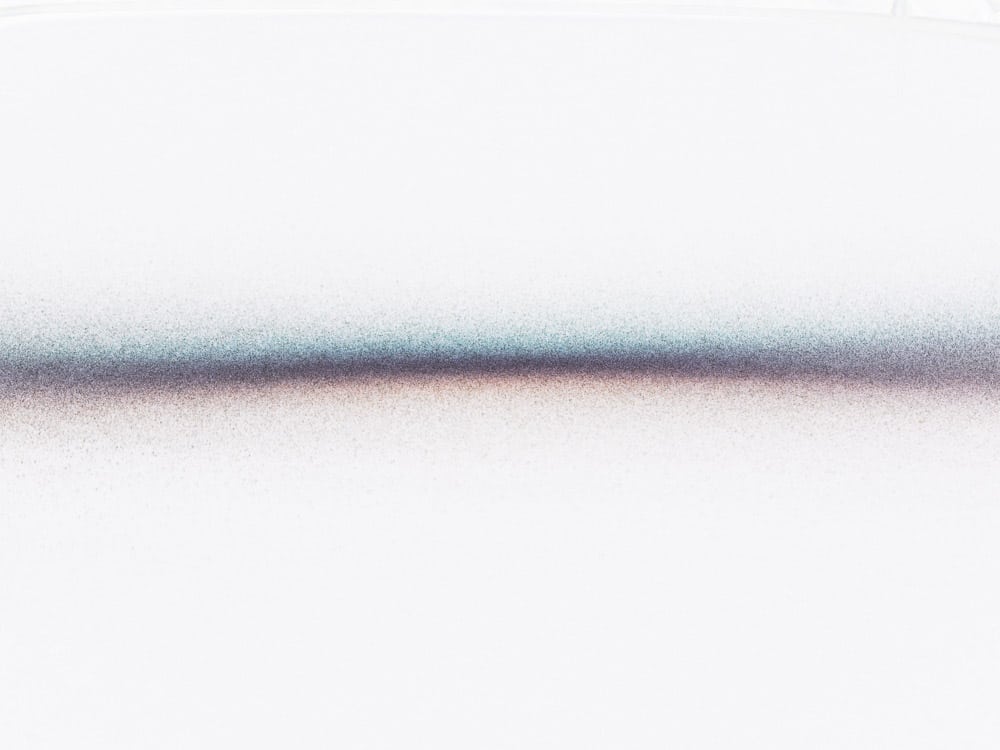
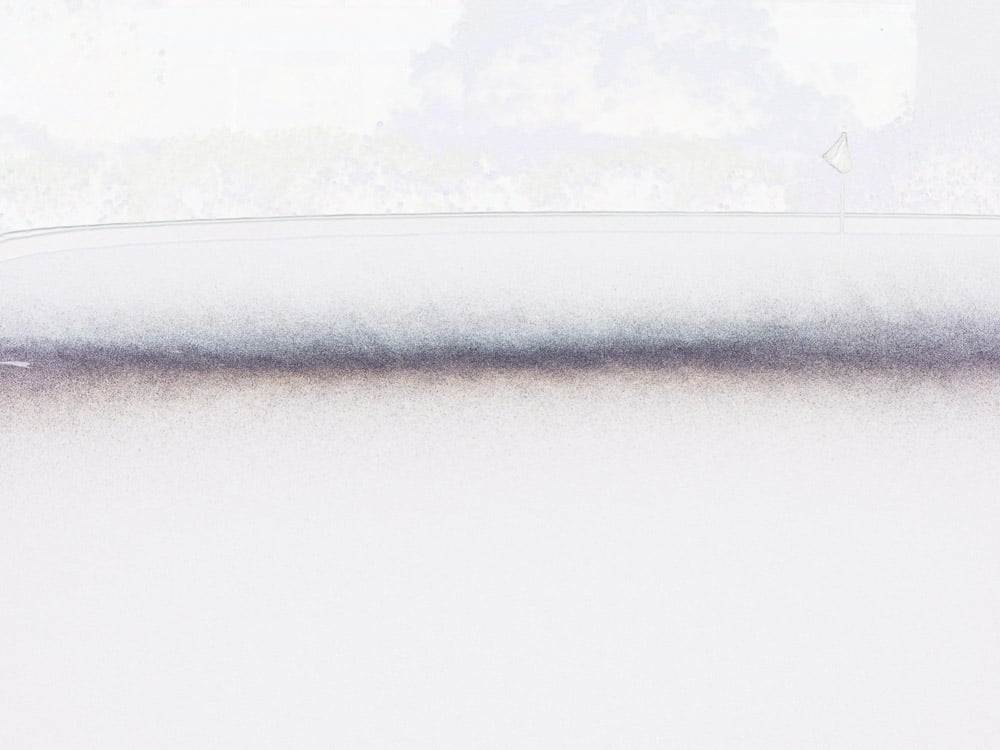
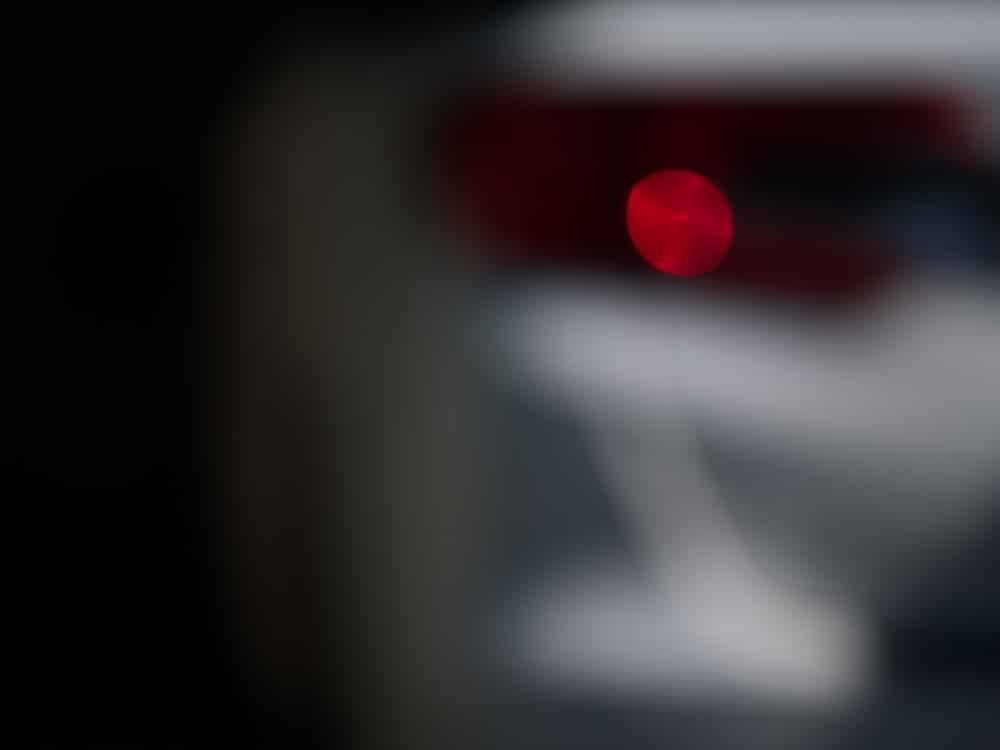


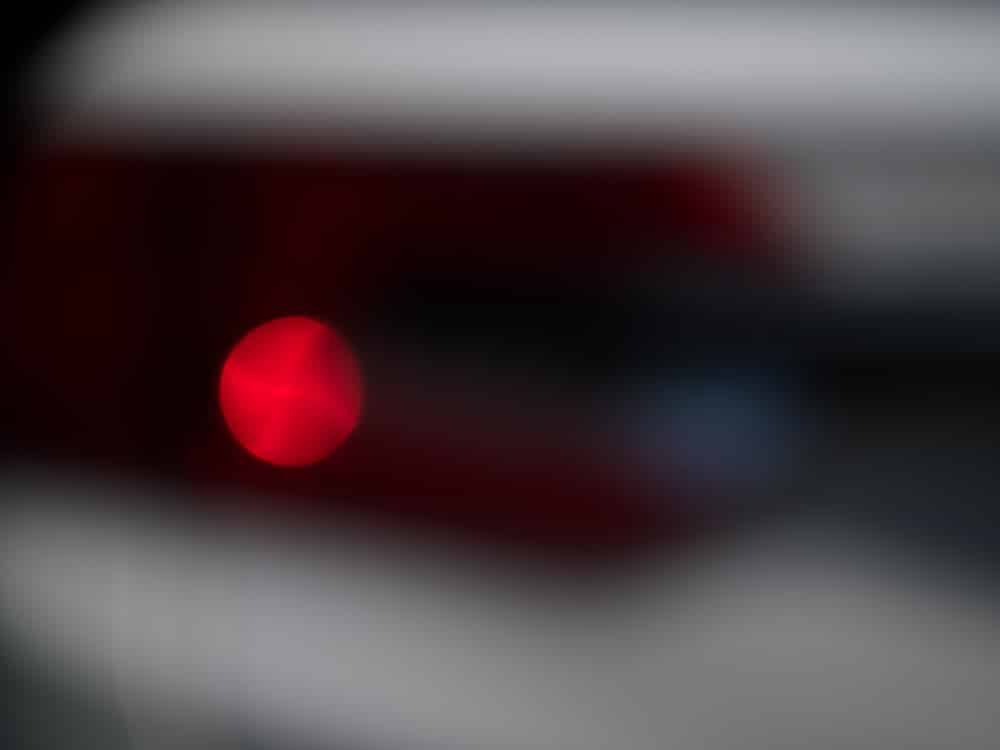

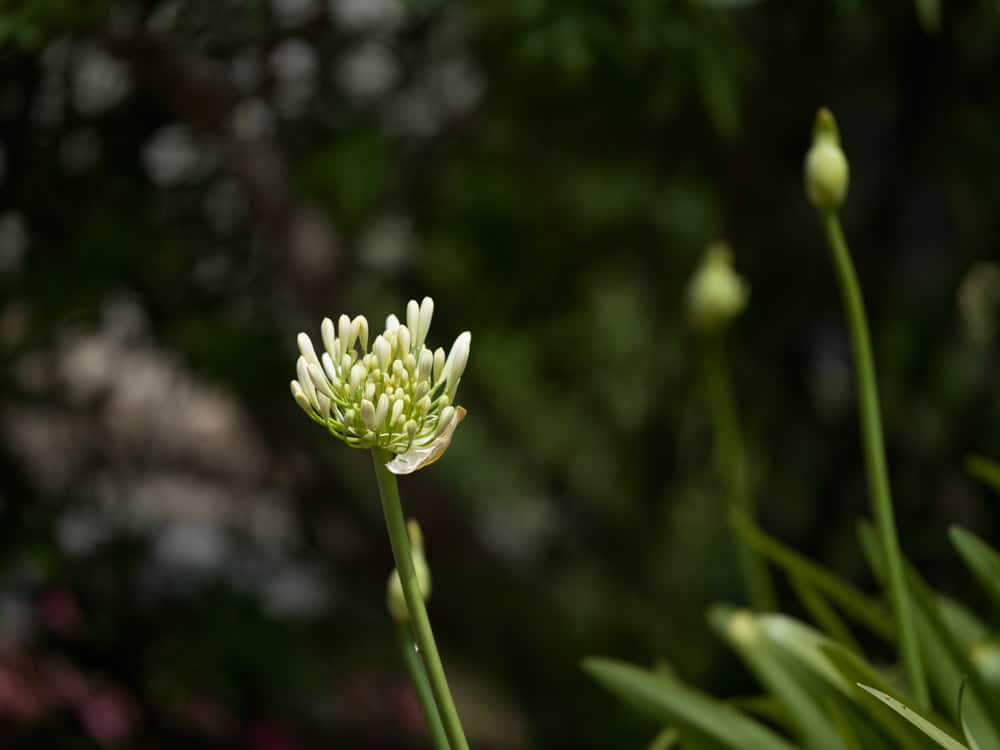
Frederic says
Thanks for testing this lens and sharing your results.
It looks like an interesting longish repro lens given its field curvature and corner performance.